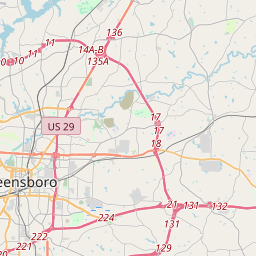Picker House and Dye House
Historical marker location:
Burlington, North Carolina
( Marker is on Glencoe Street, on the left when traveling west.)







© OpenStreetMap contributors
Glencoe
More history nearby
Asa Clapp / Asa William Henry Clapp / Mary Jane Emerson Clapp
HISTORICAL MARKER
0 mi.
First Parish Church, Unitarian Universalist
HISTORICAL MARKER
0.03 mi.
First Parish Church
NATIONAL REGISTER LISTING
0.04 mi.
Hack Stand of Reuben Ruby
HISTORICAL MARKER
0.06 mi.
Portland Civil War Monument
HISTORICAL MARKER
0.06 mi.
The state's official bird, the cardinal, is also the state bird of six other states.
About Alamance County
Alamance County Timeline
Alamance County, located in North Carolina, has a rich and diverse history that spans over centuries. The area was originally inhabited by various Native American tribes, including the Occaneechi and Sissipahaw tribes. The first European settlers arrived in the early 18th century, primarily of English, Irish, and German descent.
In the late 18th century, Alamance County played a significant role in the American Revolution. The Battle of Alamance took place in 1771, which was fought between colonial rebels called the Regulators and British Governor William Tryon's militia. Although the Regulators were ultimately defeated, this event highlighted growing discontent among North Carolina residents towards British rule and served as a precursor to the American Revolution.
During the 19th century, Alamance County's economy was primarily based on agriculture, particularly in growing cotton, tobacco, and grain. Slavery was prominent in the area, with many plantations and large farms relying on enslaved labor. The county also witnessed significant growth in textile manufacturing with the establishment of numerous cotton mills in the late 19th and early 20th centuries.
Alamance County continued to evolve in the 20th century, experiencing industrialization and urbanization. The county saw the rise of manufacturing industries such as textile mills, furniture factories, and tobacco processing plants. These industries provided employment opportunities and attracted a diverse population. Today, Alamance County is known for its vibrant communities, thriving economy, and its historical significance, offering a fascinating glimpse into North Carolina's past.
In the late 18th century, Alamance County played a significant role in the American Revolution. The Battle of Alamance took place in 1771, which was fought between colonial rebels called the Regulators and British Governor William Tryon's militia. Although the Regulators were ultimately defeated, this event highlighted growing discontent among North Carolina residents towards British rule and served as a precursor to the American Revolution.
During the 19th century, Alamance County's economy was primarily based on agriculture, particularly in growing cotton, tobacco, and grain. Slavery was prominent in the area, with many plantations and large farms relying on enslaved labor. The county also witnessed significant growth in textile manufacturing with the establishment of numerous cotton mills in the late 19th and early 20th centuries.
Alamance County continued to evolve in the 20th century, experiencing industrialization and urbanization. The county saw the rise of manufacturing industries such as textile mills, furniture factories, and tobacco processing plants. These industries provided employment opportunities and attracted a diverse population. Today, Alamance County is known for its vibrant communities, thriving economy, and its historical significance, offering a fascinating glimpse into North Carolina's past.
Alamance County Timeline
This timeline provides a glimpse into the major events and milestones that have shaped the history of Alamance County, North Carolina.
- 1849 - Alamance County is formed from parts of Orange County and Randolph County
- 1881 - The first railroad, the North Carolina Railroad, reaches Alamance County
- 1886 - The town of Burlington is incorporated
- 1963 - The Alamance County Historical Museum is established
- 1967 - Alamance Community College is founded
- 1997 - The North Carolina Zoological Park opens its off-site Conservation Center in Alamance County
- 2001 - The Textile Heritage Museum is founded in Glencoe, Alamance County